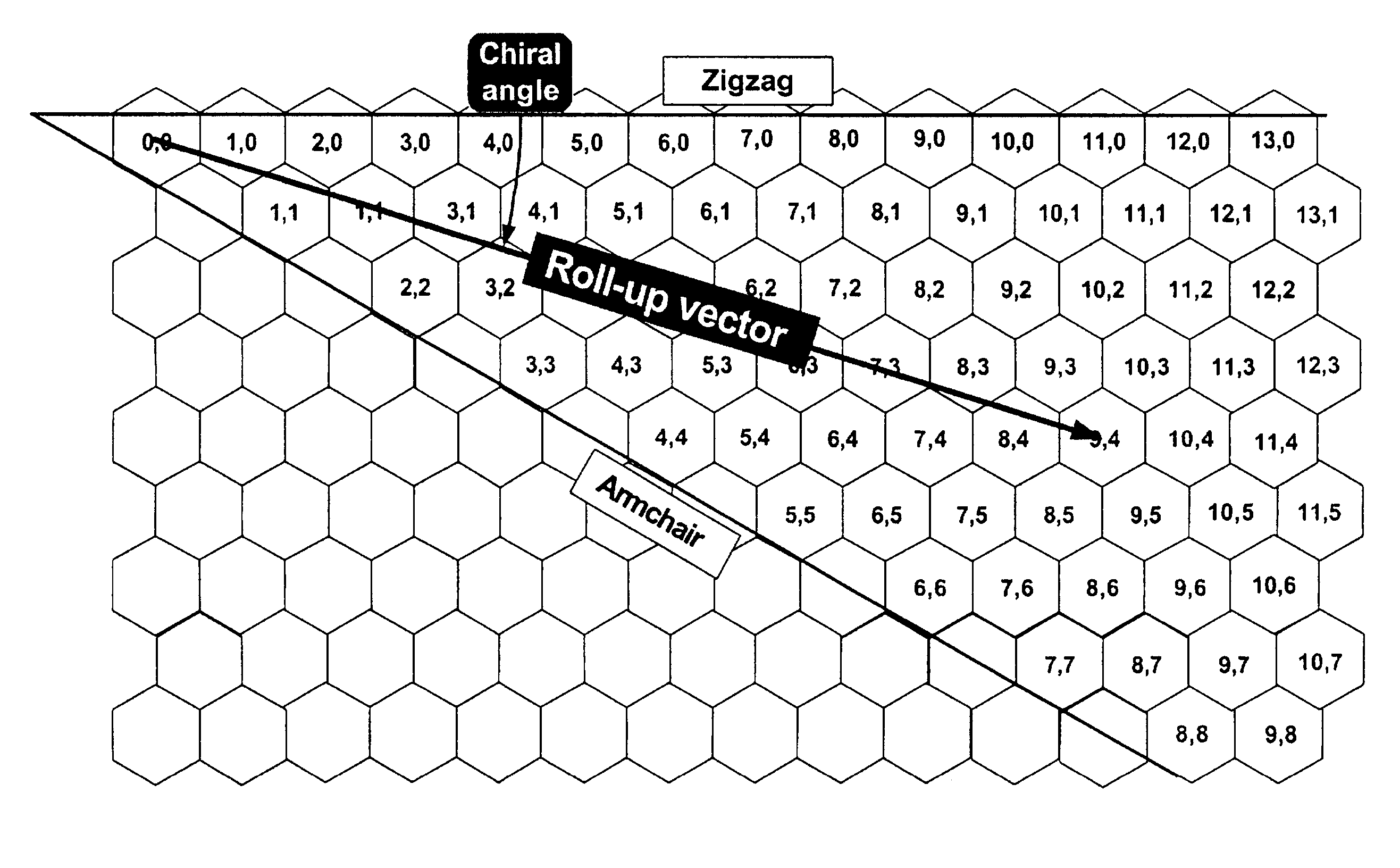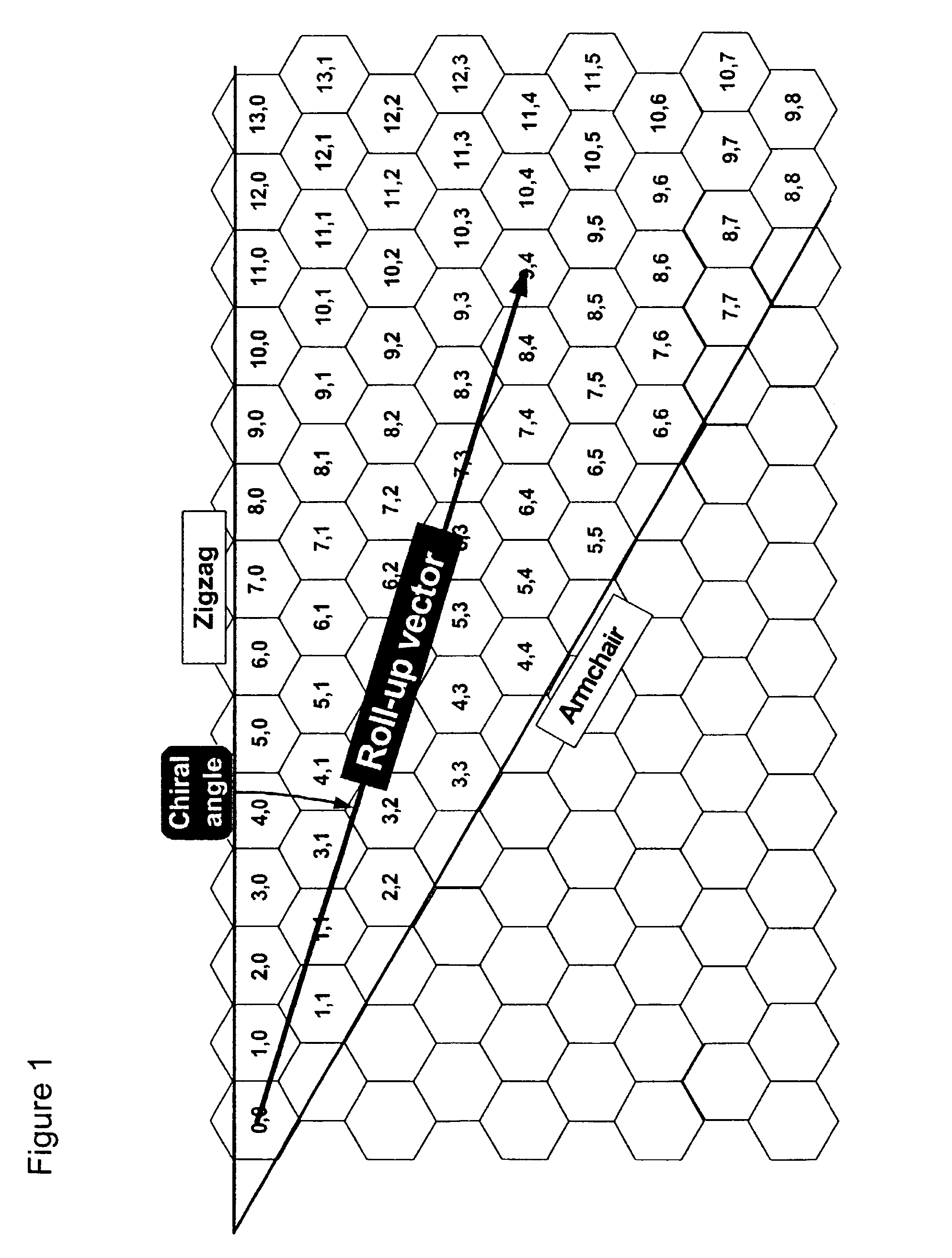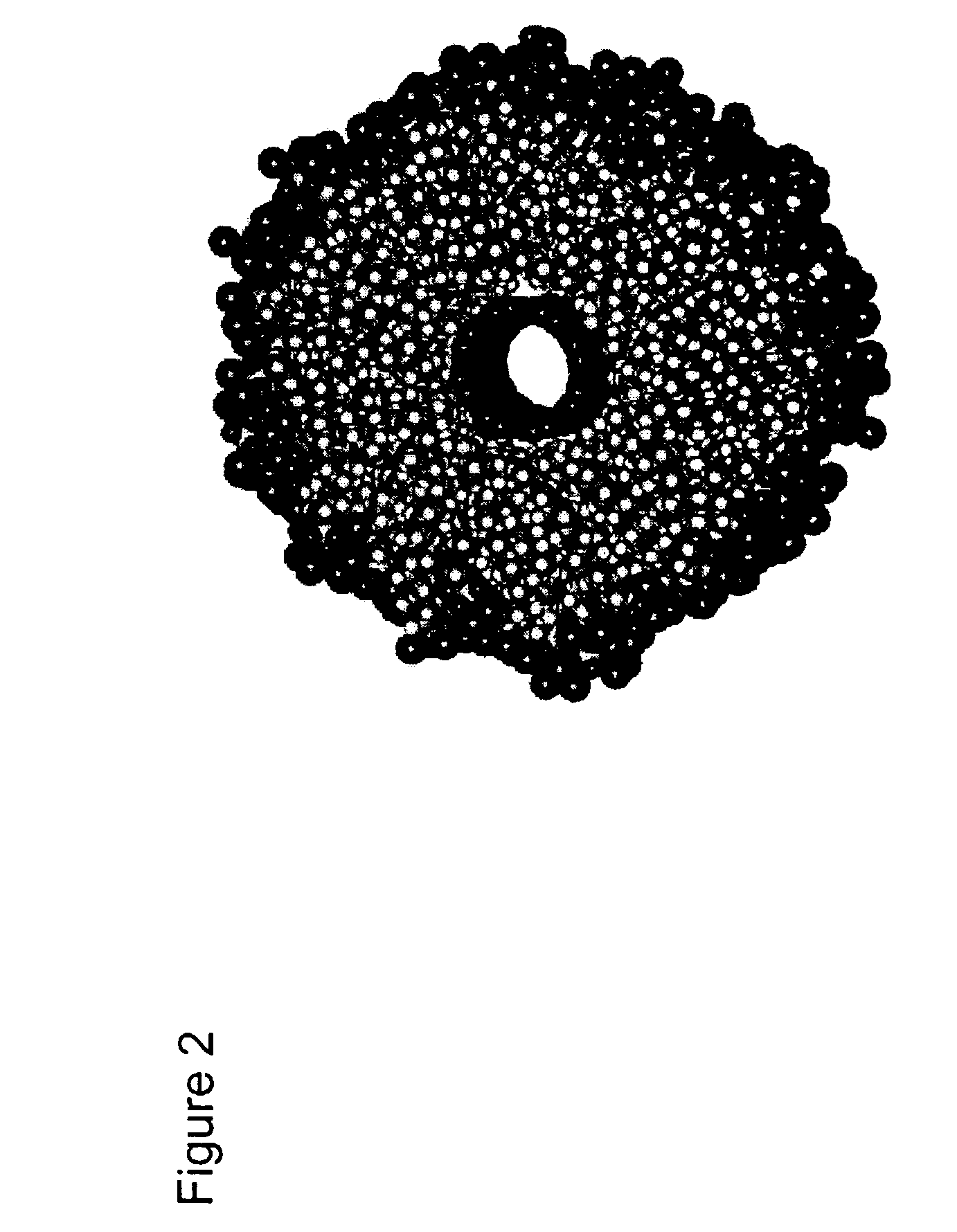Method for separating single-wall carbon nanotubes and compositions thereof
a single-wall carbon nanotube and carbon nanotube technology, applied in the field of single-wall carbon nanotubes, can solve the problems of heterogeneous product, low carbon nanotube yield, and large variation in the structure and size of the carbon nanotube population
- Summary
- Abstract
- Description
- Claims
- Application Information
AI Technical Summary
Benefits of technology
Problems solved by technology
Method used
Image
Examples
example 1
[0128]This example demonstrates the preparation of a dispersion of individual single-wall carbon nanotubes in a fluid media and the detection of fluorescence from semiconducting-type single-wall carbon nanotubes. Raw HIPCO® single-wall carbon nanotube product (HIPCO is a registered trademark owned by Carbon Nanotechnologies, Inc., Houston, Tex.), from a high-temperature, high-pressure CO disproportionation process was dispersed in 200 mls of aqueous 1 wt % sodium dodecyl sulfate (SDS) surfactant solution by high-shear mixing (Polyscience X-520) for one hour. The resulting dispersion was treated in a cup-horn sonicator (Cole Palmer CPX600) for 10 minutes at a power level of 540 W. Immediately following sonication, samples were centrifuged (Sovall 100S Discovery Ultracentrifuge with Surespin 630 swing bucket rotor) at 122,000 g for 4 hours. The upper 75% to 80% of supernatant was then carefully decanted, giving micelle-suspended nanotube solutions at a typical mass concentration of 20...
example 2
[0131]This example demonstrates the effect of changing the pH of a suspension of single-wall carbon nanotubes in a 1 wt % sodium dodecyl sulfate (99.9%, Sigma-Aldrich) (SDS) / D2O(99.9%, Cambridge Isotope Lab.) solution. The surfactant suspended single-walled carbon nanotubes were monitored using Raman, absorption and fluorescence spectroscopy as the solution pH is lowered from about pH 10.3 down to about 3.8 and cycled back to pH 10. Aliquots of 1 N NaOH or HCl (Fisher Scientific) were added to equilibrate to the desired pH. Titrations were performed in an open, stirred three-necked 250 ml flask exposed to air. Equilibration was confirmed by monitoring transient changes in the tangential mode of the Raman spectrum. Raman spectroscopy was performed in-situ using a Kaiser Process Raman Spectrometer (Kaiser Optical Inc.) with 20 mW laser intensity focused on the solution in the flask. Excitation wavelengths of 532 and 785 nm were employed. A 1 ml sample of solution was removed from the ...
example 3
[0132]This example demonstrates a method to separate a mixture of as-produced single-wall carbon nanotubes by type using selective charge transfer and capillary electrophoresis. As-produced HIPCO® single-wall carbon nanotube material (produced by high temperature, high pressure disproportionation of CO), was mixed with a solution of 1 wt % sodium dodecyl sulfate (SDS) anionic surfactant in water, ultrasonicated at 540 W and placed in an ultracentrifuge and rotated with a force of 122,000 g. The supernatant, containing a homogeneous mixture of a distribution of different types of individual single-wall carbon nanotubes, rather than as aggregated bundles, or “ropes,” was decanted. The ionic strength of the decant was adjusted to about 70 mM using excess SDS surfactant. The nanotube-SDS solution was acidified to effect nanotube protonation by adding concentrated HCl. The pH after HCl addition was pH 3. The ionic strength of the nanotube sample was adjusted and placed in a solution cont...
PUM
| Property | Measurement | Unit |
|---|---|---|
| Fraction | aaaaa | aaaaa |
| Structure | aaaaa | aaaaa |
| Density | aaaaa | aaaaa |
Abstract
Description
Claims
Application Information
 Login to View More
Login to View More - R&D
- Intellectual Property
- Life Sciences
- Materials
- Tech Scout
- Unparalleled Data Quality
- Higher Quality Content
- 60% Fewer Hallucinations
Browse by: Latest US Patents, China's latest patents, Technical Efficacy Thesaurus, Application Domain, Technology Topic, Popular Technical Reports.
© 2025 PatSnap. All rights reserved.Legal|Privacy policy|Modern Slavery Act Transparency Statement|Sitemap|About US| Contact US: help@patsnap.com



